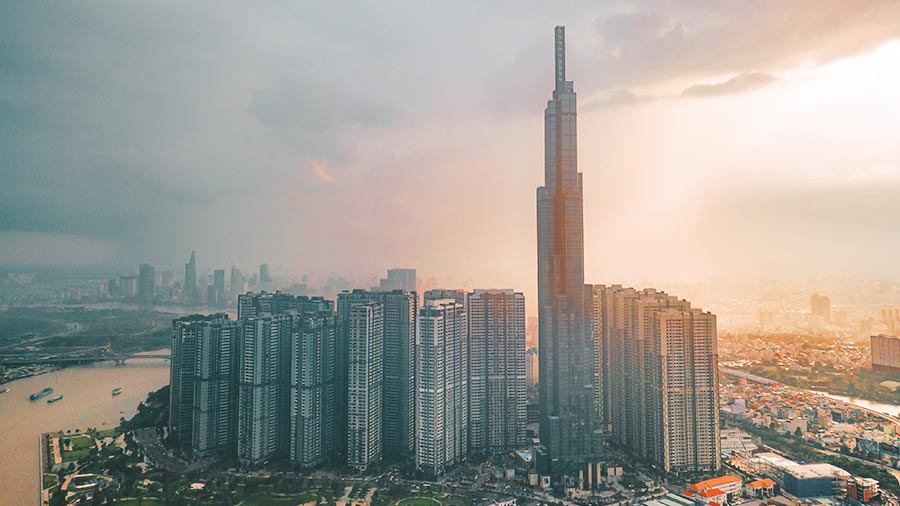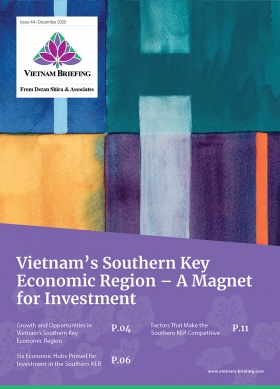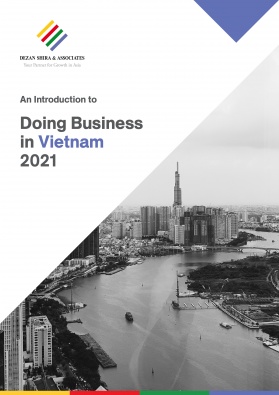Vietnam’s Thu Duc City: A New Innovation Hub for Ho Chi Minh City
- Vietnam’s new Thu Duc City will combine Ho Chi Minh City’s District 2, District 9, and Thu Duc District, encompassing an area of 211 square km with a population of a million people.
- The main objective behind the decision is the complementary socio-economic profiles of the three districts that are to be combined. While District 9 hosts the tech-hub, District 2 will be developed into a mixed-use urban space and Thu Duc District as a major education hub.
- Foreign investors’ interest in Ho Chi Minh City is likely to surge in response to the announcement. This could primarily impact industrial land rent and residential costs in the city in addition to substantially increasing future population demand in the region.
Recently, the Vietnamese National Assembly voted in favor of establishing a ‘city within a city’ under Ho Chi Minh City. The new ‘Thu Duc City’ is envisioned to be a district-level urban unit and will include the eastern District 2, District 9, and Thu Duc District. Thu Duc City will be spread over an area of 211 square km with an estimated one million people residing in the area.
The move is likely to have a positive effect on investor confidence and the business environment around Ho Chi Minh City. The new urban unit is expected to generate 30 percent of Ho Chi Minh city’s economic output in addition to possibly attracting new investors into the region.
The vision: An innovation district
The government’s vision behind this decision appears to be a desire to foster innovative ecosystems through agglomeration effects. This means placing innovative industries in close proximity to one another in order to facilitate integrated economic production. This strategy is similar to development plans in Shanghai in China and Gangnam in South Korea.
The three components of the new urban unit are key to this objective:
- District 9 hosts the hi-tech hub and is often referred to as a ‘Technopolis’. Since 2017, the District has expanded its urban use to include tech companies, medical facilities, warehouses, service industries and commercial complexes.
- District 2 is where the Thu Thiem new urban area is located. This urban space is considered key to meeting the future population demand of Ho Chi Minh City and is expected to develop into a mixed-use central business district. The development plan includes ecologically designed residential spaces, public transit systems and is expected to accommodate 130,000 residents over 20 years.
- Thu Duc District hosts 12 universities including Vietnam National University and is home to over 70,000 students. This is key to supplying a skilled workforce to knowledge-intensive enterprises located in the area.
Therefore, the three components of Thu Duc City are complementary and offer the infrastructure and human capital capacity to transform the region into an ‘innovation district’. Integrated production within this ‘science-education-financial’ institutional environment could lead not only to additional investments but also the rise of new companies, and a wider, vibrant residential community.
The impact on foreign investors: 2 key factors
The primary mode through which this move impacts foreign businesses is location attractiveness of Ho Chi Minh City and its surrounding regions. The new city is expected to contribute a third of the wider city’s GDP and 7 percent to national economic output.
At present, Ho Chi Minh City is a popular investment destination for foreign firms. In the first quarter of last year, the city attracted US$1.05 billion in FDI, primarily in sectors such as information technology, retail, and construction. Firms from Japan, Singapore, and Hong Kong are currently operating in the city, which has emerged as a vital industrial hub of Southern Vietnam.
If Thu Duc City’s creation leads to a surge in the attractiveness of Ho Chi Minh City as an investment destination, an impact on Ho Chi Minh City’s – real estate both residential and commercial – could also be expected.
JLL research reports that in the third quarter of 2020, more than 90 percent of real estate supply in Thu Duc City was taken up. Over the next four years, 54 percent of industrial real estate supply in Ho Chi Minh City could be targeted towards Thu Duc City. Demand from buyers and developers could determine the pace of land price inflation in the region and the Ho Chi Minh City at large.
The secondary mode through which foreign investors may be impacted is the governance of Thu Duc City itself. All local government bodies in the merged areas will be restructured and a new, unified administrative authority including a court will govern Thu Duc City.
The Ho Chi Minh City People’s Committee recently determined January 22 as the establishment date of Thu Duc City. From this date onwards, the new administrative unit commenced operations. The transitionary restructuring of the region is likely to take longer. The government has communicated its intention to limit the disruption to residents and businesses during this time.
However, during the transitionary period until the end of February 2021, it is likely that administrative functions such as business registration could be delayed and existing licenses or permits in the region may need to be amended. Therefore, in the short-term, the goal of local governance is most likely to be stabilizing the government apparatus such that minimal costs are associated with the transition.
About Us
Vietnam Briefing is produced by Dezan Shira & Associates. The firm assists foreign investors throughout Asia from offices across the world, including in Hanoi and Ho Chi Minh City. Readers may write to vietnam@dezshira.com for more support on doing business in Vietnam.
- Previous Article Vietnam’s Thai Nguyen Province – Investment Guide for Investors
- Next Article Investing in Vietnam’s Quang Nam Province – 3 Competitive Factors





























